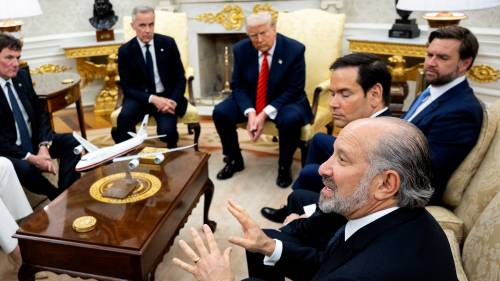The recent comments from U.S. Commerce Secretary Gina Raimondo cast a shadow over Canada-U.S. trade relations, suggesting Trump-era tariffs might become a permanent fixture in the cross-border economic landscape. Standing beside reporters in Washington yesterday, Raimondo delivered what many Canadian officials feared: “These measures reflect a new economic reality, and we’re not looking at them as temporary.”
I’ve spent the last week speaking with trade officials on both sides of the border. The anxiety in Ottawa is palpable. “We’ve been operating under the assumption that rationality would eventually prevail,” confided a senior Canadian trade representative who requested anonymity due to the sensitivity of ongoing negotiations. “But rationality and trade policy don’t always align in Washington these days.”
The tariffs, initially imposed during Trump’s first administration on aluminum (10%) and steel (25%), were partially rolled back but never fully eliminated. The Biden administration maintained many of these measures while framing them as leverage for broader trade reforms. According to data from Export Development Canada, these tariffs have cost Canadian producers approximately $3.8 billion annually since their implementation.
What’s particularly troubling for Canadian officials is the bipartisan embrace of protectionist trade policies. When I visited steel plants in Hamilton last month, workers expressed frustration at being caught in geopolitical crossfire. “We’re not China,” said James Martell, a third-generation steelworker. “Our industries are integrated. Their cars have our steel. Our buildings have their lumber. This isn’t competition – it’s cooperation.”
The economic implications extend beyond raw numbers. The Canada-U.S. trading relationship remains one of the world’s largest bilateral economic partnerships, with approximately $2.5 billion in goods and services crossing the border daily according to Statistics Canada. This integration means tariffs create ripple effects throughout supply chains.
At the heart of the issue is a fundamental shift in how Washington views trade policy. “We’re seeing trade increasingly weaponized as a tool of foreign policy rather than economic policy,” explained Dr. Amrita Singh, international trade economist at the University of Toronto. “The economic arguments against these tariffs are overwhelming, but they’re not driving decision-making.”
The Canadian government has been exploring multiple response strategies. Last week, Deputy Prime Minister Chrystia Freeland indicated Canada might implement targeted countermeasures if the U.S. maintains its position. “We don’t want an escalation, but we won’t hesitate to defend Canadian interests,” she stated during a press conference in Ottawa.
During my recent reporting trip to Brussels, European trade officials expressed solidarity with Canada’s position. The EU faced similar tariffs and successfully negotiated some exemptions, though many remain in place. “What we’re all realizing is that the old rules-based trading order is eroding,” a senior EU trade commissioner told me over coffee near the European Commission headquarters.
For everyday Canadians and Americans, these trade disputes translate into higher prices. The Peterson Institute for International Economics estimates that steel tariffs alone add approximately $900,000 in additional costs for every American steel job potentially saved. Meanwhile, products containing steel – from automobiles to appliances – become more expensive for consumers on both sides of the border.
The timing couldn’t be more concerning for bilateral relations. With the upcoming U.S. election in November, trade rhetoric is likely to intensify. Both major parties are embracing elements of economic nationalism, leaving little political space for free trade advocacy.
Perhaps most worrying is the normalization of these trade barriers. “What starts as emergency measures often becomes the new baseline,” warned former World Trade Organization negotiator Thomas Lingren during our conversation at the recent Global Economic Forum. “Industries adapt, supply chains reconfigure, and suddenly removing tariffs becomes politically difficult.”
Some Canadian industries have begun shifting their export strategies away from U.S. dependency. The Comprehensive and Progressive Agreement for Trans-Pacific Partnership (CPTPP) and Canada-European Union Comprehensive Economic and Trade Agreement (CETA) provide alternative markets, though none can fully replace the proximity and scale of U.S. trade.
Walking through Quebec’s aluminum production region last month, I witnessed communities grappling with economic uncertainty. “We’ve weathered many storms,” explained Marie Tremblay, mayor of a small town heavily dependent on aluminum production. “But this feels different – like the rules we’ve built our economy around are changing.”
What’s clear from Secretary Raimondo’s comments is that Canada cannot simply wait for policy reversal. The new normal in trade relations demands strategic adaptation rather than tactical responses. For a country that sends nearly 75% of its exports to the United States, this represents nothing short of an economic reckoning.
As both countries navigate this complex terrain, the future of North American economic integration hangs in the balance. The promise of free trade that once defined the relationship seems increasingly distant – replaced by a cautious pragmatism and the persistent shadow of protectionism.






